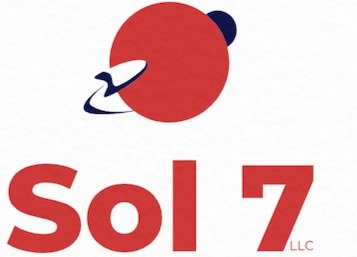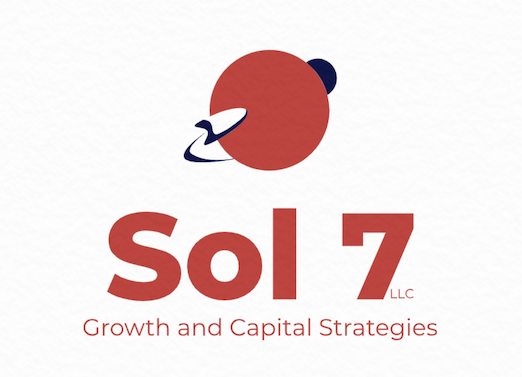When You Need A Plan Today
For Your Company’s Tomorrow
#1 Determining
What You Need
Your job is to run your business, ours is to understand your capital needs. We collaborate with you to identify the most effective ways to secure funding that aligns with your growth objectives.
#2 Structuring How
To Get There
Don't let anyone fool you—raising capital is always challenging, and you typically only get one opportunity in front of an investor. We'll be with you at every step of the process, from building the pitch deck to signing the term sheet and planning for your future capital needs.
#3 Implementing
the Plan
There are numerous options available for raising capital, including priced rounds, convertible debt, SAFE notes, and more. We'll assist you in determining the best fit for you and your company.
In Andy Weir's The Martian, Sol 6 marks the moment when Mark Watney realizes he is stranded on Mars, utterly alone and without an apparent way home. This sense of isolation can resonate with business owners feeling capital constraints.
Sol 7 represents the pivital day Watney decides to take inventory, formulate a plan, and resolve to make it back to Earth. At Sol 7, our mission is to help you craft that plan. Faced with seemingly overwhelming odds, we guide your company towards a path of growth and success.
While we don't offer advice on growing potatoes, we bring decades of experience in raising capital, operating companies, and engaging with investors.
From The Founder
Wade T. Brooks, PhD
Frequently Asked Questions
-
Valuation methods vary, depending largely on a company's stage of development. Early-stage companies are often more challenging to value because there are fewer tangible metrics available. In contrast, later-stage companies might be valued using the discounted cash flow method (DCF), which considers the present value of future cash flows, adjusting for the time value of money. It's also typical for these companies to be valued based on multiples of their profits or revenues, often compared to similar companies.
For startups, a practical approach is to reverse-engineer the valuation by determining how much capital is needed and what percentage of the company the founders are willing to sell. This need is usually based on reaching profitability or achieving a business milestone significant enough to facilitate further investment rounds.
For instance, consider a scenario where $250,000 is required to build a prototype—a critical milestone that could substantially increase the business's value. From a practical standpoint, it might be advisable to raise $500,000. Why? Because, as experience suggests, things often cost twice as much and take twice as long as anticipated, and running out of funds prematurely is a risk best avoided.
If you agree to sell 20% of your company for $500,000, the pre-money valuation (the value of the business before the investment) would be $2,000,000.
However, there might be some confusion here—shouldn't the calculation result in a $2,500,000 valuation? Indeed, it should, but that figure represents the post-money valuation, which is the sum of the pre-money valuation and the new capital injected. Despite initial appearances, the math holds: after the investment, with the investor owning 20%, the valuation of $2,500,000 divided by $500,000 aligns with the terms.
This method of valuation, driven by capital needs and the ability to pivot or scale the business significantly with the investment, is common. However, other approaches like the Berkus Method, Scorecard, and DCF are also viable, depending on specific business circumstances.
However, early-stage valuation can often complicate capital raising efforts. To mitigate this, various instruments such as convertible notes and SAFE (Simple Agreement for Future Equity) notes are used. These allow investors to invest at present, with the company's valuation deferred until a later date, typically converting at a discount to the future investment round’s value.
-
The outcome of fundraising efforts is influenced by multiple factors.
The stage of your company—whether it's Pre-Seed, Seed, Series A, Series B, etc.—is crucial, as are the size of your business, the current state of the capital market, your company's valuation, and the risk of dilution.
Generally, the proportion of equity you sell tends to decrease as your company matures, with percentages typically ranging between 10% and 20%.
A key consideration is how much equity is necessary to attract investors. Selling too little may not provide sufficient upside, while selling too much could lead to substantial dilution, significantly reducing your ownership stake, and motivation.
Unlike Shark Tank, where offers can claim 50% to 90% of a business, it's essential to maintain enough equity to stay motivated. This means keeping enough "skin in the game" to fully invest your time and energy, rather than just taking the funding and walking away. Investors understand this and prefer you to have a significant stake to ensure your ongoing commitment.
Additionally, overvaluing your company early on can complicate future fundraising efforts. For example, if you sell 5% of your company for $500,000 during the seed stage, you're setting a post-money valuation of $10.5M. If you then raise $5M at Series A for another 5%, your company's valuation would increase to $105M. If similar companies cannot sustain these valuations, it may become difficult to secure future investments at or above these levels.
Angel and venture investors generally target a 10x return on their investments, given the high risk involved—50% to 70% of the companies in their portfolios may not yield any return on the invested capital. This expectation aligns with Pareto's 80/20 rule, where approximately 20% of the investments are expected to produce 80% of the total returns.
With a $105M valuation after your Series A, you would need to achieve a sale price of $1.05B to meet the 10x return expectation. If such a valuation is unattainable, you may need to consider a "down round," where you secure capital at a valuation lower than previous rounds, potentially causing dissatisfaction among your existing shareholders.
-
Raising capital generally spans three to six months, and can extend up to a year, influenced heavily by your level of preparedness, the state of your cap table—which details your current stockholders and the structure of their shares—how extensively you've researched, and your existing contacts.
This process is also highly dependent on the current state of the capital markets. When venture capitalists possess excess funds needing deployment, deals may close faster and at higher valuations. Conversely, during tight capital periods, fundraising can be slower and more challenging. Over the lifespan of your company, you might experience both market conditions if you're raising multiple rounds.
The due diligence phase involves assessing what you need to organize to prepare your pitch and finalize the terms. Typically, compiling financials and projections (pro-formas) consumes the most time.
You'll need to outline significant milestones—both past achievements and future goals—and estimate the funding required to reach each. Determining how much capital to raise, the equity percentage you're willing to exchange, the type of investment instrument (e.g., priced round, convertible note, SAFE note), and specific terms (such as anti-dilution clauses, preferences, discounts) is crucial.
It's also important to identify the type of investors you're targeting—whether friends and family, angel investors (who invest personal funds), or venture capitalists (who manage others' money, typically from limited partners or LPs).
While raising funds is deeply strategic and might only occur a few times during your business's lifecycle, it requires significant involvement from the CEO or founder and can distract from day-to-day operations. The key is to maintain focus on your company's growth and success throughout the fundraising process.
-
We recommend these first:
Art of the Start: The Time-Tested, Battle-Hardened Guide for Anyone Starting Anything by Guy Kawasaki
The Hard Thing About Hard Things by Ben Horowitz
The Innovator's Dilemma: The Revolutionary Book That Will Change the Way You Do Business by Clayton M. Christensen
The Lean Startup: How Today's Entrepreneurs Use Continuous Innovation to Create Radically Successful Businesses by Eric Ries
Made to Stick: Why Some Ideas Survive and Others Die by Chip Heath, Dan Heath
Predictably Irrational, Revised and Expanded Edition: The Hidden Forces That Shape Our Decisions by Dan Ariely
Venture Deals: Be Smarter Than Your Lawyer and Venture Capitalist by Brad Feld and Jason Mendelson
Zero to One by Peter Thiel
Second, these:
7 Habits of Highly Effective People by Stephen R. CoveyThe Ascent of Money: A Financial History of the World by Niall Ferguson
The Black Swan: The Impact of the Highly Improbable by Nassim Nicholas Taleb
Crossing the Chasm: Marketing and Selling High-Tech Products to Mainstream Customers by Geoffrey A. Moore
The Design of Everyday Things by Donald A. Norman
Development as Freedom by Amartya Kumar Sen
The Discipline of Market Leaders: Choose Your Customers, Narrow Your Focus, Dominate Your Market by Michael Treacy, Fred Wiersema
The Future of Freedom: Illiberal Democracy at Home and Abroad by Fareed Zakaria
Good to Great: Why Some Companies Make the Leap... and Others Don't by Jim Collins
Guns, Germs, and Steel: The Fates of Human Societies by Jared Diamond
In The Plex: How Google Thinks, Works, and Shapes Our Lives by Steven Levy
The Long Tail: Why the Future of Business is Selling Less of More by Chris Anderson
Moneyball: The Art of Winning an Unfair Game by Michael M. Lewis
The Next 100 Years: A Forecast for the 21st Century by George Friedman
Nudge: Improving Decisions About Health, Wealth, and Happiness by Richard H. Thaler, Cass R. Sunstein
The Prince by Niccolò Machiavelli
The Road to Serfdom by F.A. Hayek
A Short History of Nearly Everything by Bill Bryson
Small Is Beautiful: Economics as if People Mattered by E. F. Schumacher
Start with Why: How Great Leaders Inspire Everyone to Take Action by Simon Sinek
Start-up Nation: The Story of Israel's Economic Miracle by Dan Senor, Saul Singer
The Wisdom of Crowds by James Surowiecki




